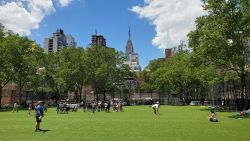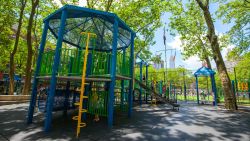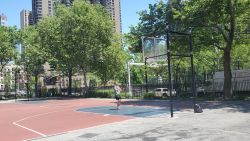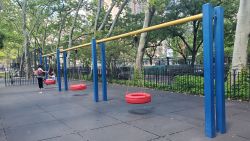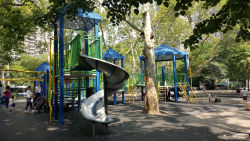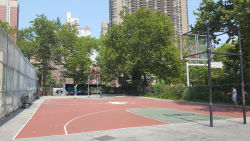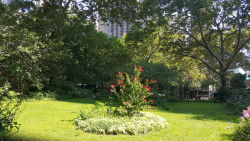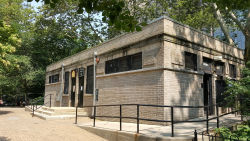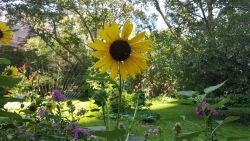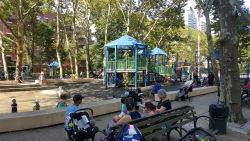St. Vartan Park
St. Vartan Park
What was here before?
In 1655, Dutch settler Jacobus Hendrickson Kip (1631-1690) established a farm along Manhattan’s East River. The family built a farmhouse near present day East 35th Street in what would become the western portion of the park. The first known structure in “Kip’s Bay,” it remained until 1851, making it the last surviving house from New Amsterdam. The land stayed in the Kip family for 150 years and was gradually subdivided by Catharine Kip (1776–1847), and her husband John Van Tuyl (1783–1856) between 1804 and 1869.
This was also the site of the Battle of Kip's Bay, at a time when the East River widened to lap at what would become the parks’ eastern edge. On September 15, 1776, in the nearby bay the British staged an amphibious landing that forced American militia to flee. This allowed the British to capture New York City for the remainder of the war.
With the 1811 Commissioners Plan for Manhattan’s Street grid and the opening of Second Avenue in 1839, urban development began in the vicinity of today’s park.
How did this site become a park?
In 1903 the City acquired the former Kip land and leveled tenement buildings occupying a full city block to make way for the park “in response” said the Parks Department, “to the plea for a breathing spot, by the dwellers of the middle east side of Manhattan.” After site improvements the park, then known as St. Gabriel after a nearby church, opened in 1905. It featured a playground, a “boy’s gymnasium” apparatus and a running track. A wading pool was installed in 1930, and a children’s farm garden took root here in 1931.
.
In 1936 the park was renovated with handball, horseshoe and basketball courts, parallel and horizontal bars, and a roller-skating track. A memorial flagstaff, with bronze honor rolls commemorating local men who gave their lives during World War I, was installed, sponsored by the Murray Hill Post of the American Legion.
St. Gabriel’s Church was demolished in 1936 to make way for construction of the Queens-Midtown Tunnel. In 1938, portions of the parkland were surrendered to the Board of Estimate as a right-of-way approach to the tunnel. The park’s trees, benches, and playground areas were relocated as this road cut the park in two from west to east and reduced the parkland by nearly a quarter acre. In exchange, the Tunnel Authority agreed to improve nearby parks and playgrounds in the vicinity of East 42nd Street.
In 1984 the playground and fieldhouse were renovated, sponsored by the Glick Organization, a realty firm. The renovation added safety surfacing, benches, water fountains, game tables, a sprinkler surrounded by a low-lying concrete amphitheater, and timber form play equipment. More than 9,000 shrubs were planted, as well as magnolia and honey locust trees that complemented existing London plane trees planted in the 1930s.
In the 1990s thieves were apprehended stealing the memorial plaques, which were recovered, and reinstalled more securely in the north wall of the park house in 2004. Another reconstruction in 2000 upgraded park features such as the play structures, park drainage and installed new cast concrete play sculpture of a lion and bird. In 2021 the athletic fields were outfitted with artificial turf.
The long-locked fenced eastern portion of the park (where the farm garden once stood) was reclaimed in 2022 for regulated passive use. Its lawn and flower beds have been supported by the St. Vartan’s Park Conservancy, an official park steward.
Who is this park named for?
The park was first briefly known as Civic Park and then named St. Gabriel’s Park after the church at 310 East 37th Street, razed in 1936 for tunnel construction. The park was renamed in 1978 following the construction of St. Vartan Cathedral of the Armenian Orthodox Church at Second Avenue and East 35th Street in 1967. St. Vartan was an Armenian who lived during the fourth century, remembered for his martyrdom at the Battle of Avarayr in 451AD between Armenian and Iranian forces in present-day Albania.
Check out your park's Vital Signs
Clean & Safe
Green & Resilient
Empowered & Engaged Users
Share your feedback or learn more about how this park is part of a
Vital Park System

